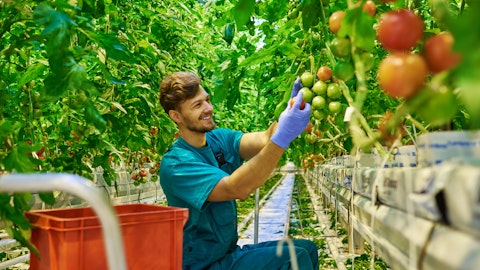Scott Fortune: Got it. Okay. And last one for me, just on the operational side. Obviously, you’re up against higher cost inventory, higher inflation costs — freight, you mentioned, warehousing. But that seems to all be cleared now. Are we going to see kind of steadily improvement in margins, just kind of provide an update on the gross margin drivers here? And then kind of the cadence throughout ’24. But more importantly, as you bring on higher service margins there, the improvement towards returning to profitability. And any color or view on the timing of profitability throughout ’24 here?
Kevin Vassily: Sure. Let me take that. So we don’t give specific guidance. I think we’re still committed to the goal of getting to profitability in 2024. I think the things that we’ve put in place to help take expense out where we can, aren’t short-term fixes, but we’re making progress. On one front, I’ll talk about the cost of product. We’ve put in place a number of initiatives with some of our key contract manufacturing partners to help lower the cost of goods sold for us, which will, over time, provide us with even healthier gross margins. I think that’s one of the areas where given our experience with the supply chain and our long relationships there, our ability to improve on that front is a real one, one. And secondly, we’ve never been either the lowest cost provider or the highest premium provider.
We’ve been — we like to call kind of the sweet spot of value for customers, which means our prices do have some room to go up if we choose to selectively do that. So there are some areas where we could pursue and will pursue very small price increases that will help also boost that gross margin line. So while there’s going to be variability from quarter-to-quarter, we still feel good about the idea that we can get — continue to push gross margins upward from here. So that’s one area. Secondly, we are working on a number of other initiatives on the OpEx side that we think can help bring costs down as well. One that I think we can talk about is we’ve engaged with another kind of logistics/shipping partner, where we feel like we can take meaningful cost out of the cost of shipping product out to customers that we just kind of inked a contract over the last — probably in the last two months.
And so as the balance of this calendar year rolls out, some of that cost savings will roll through as well. So I think the foundation has been laid and — to continue to improve. But I mean, you hit on a pretty important point. Some of the hard work is in the rearview mirror for us now. We have reduced that inventory. Our inventory now sits at a more normalized level. Aside from some pockets, we haven’t completely cleared all of it out, but we can believe some of the rest of that out in a way that won’t be hugely detrimental. And then just the cost of operating with that lower inventory accrues benefits to us as well. So I still think that we see profitability kind of on the horizon. The question will be how quickly we get to that horizon, but it’s there.
So we’re optimistic.
Scott Fortune: Thank you. I appreciate the update.
Operator: One moment for our next question. And our next question will come from the line of Thierry Wuilloud from Water Tower Research. Your line is open.
Shawn Severson: Hi. Good afternoon, gentlemen. This is Shawn Severson in for Thierry. Just had a question about the move into kind of the bricks-and-mortar side. And when you’re talking about going from online to in retail. What are some of the criteria that you’re looking at over the near term? I guess, how would that rollout look? And are there certain metrics or decisions that need to be made by the retailers or what’s the framework for a rollout there?
Lawrence Tan: Once the — it’s pretty much based on two things. One is the sales on particular SKUs. Now once the sales become a certain volume — the retailer will have the data to support their decision-making. Now secondly is the product road map, how well, the line of products that we can bring in, in the future as well, not just the ones that lead our way into the store. So the first — we are working on the first step and the second step at the same time, where once the sales volume has achieved a certain level, we will get more attention than potentially some SKUs get opportunities into the store.
Shawn Severson: Now would this be just for a limited number of stores initially? Or is this kind of going to be looking across a region or a small region or large region? How would they address the size of rollout?
Lawrence Tan: It depends on specific retailers and the category manager. Usually, I think it will be a trial to a certain number of stores. And then depends on whether the product is a national product, it will go to all the stores.
Shawn Severson: Great. Thanks. And my last question is, any update on international in the quarter?
Lawrence Tan: There’s nothing particular. I think it’s similar to what before. There’s not much that I can mention here.



